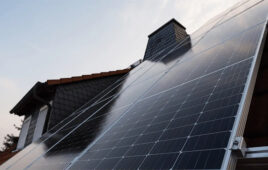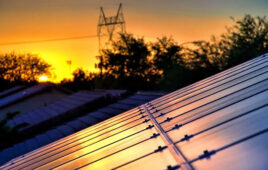
It’s important to understand how specific solar products and installation decisions impact potential ROI. For rooftop solar PV, the roof type and mounting system have a major impact on lifetime costs and savings. You should view solar + roof as a single asset. Watch our walkthrough as we provide an overview of a cash-flow analysis to measure ROI of a solar installation.
How Much Could You Be Saving?Sponsored Content by S-5!





The focus is on metal roofs and in this segment the overall costs and expectations of having a roof that lasts some 30 years and its costs to replace as opposed to a metal roof with perhaps a 60-70 year life expectancy. But from a typical residential point, the roof is probably some kind of asphalt material and when one is ‘calculating’ ROI roof replacement is usually not considered a good point made by this video. In the residential “retail electricity market” the energy that goes through your house power meter is bundled with all types of costs for the grid system. It’s these costs that over time drive up the ROI of electricity used by the homeowner. As soon as you install solar PV on your home as it is in service for several years, the savings in electricity adds up to pay off the system installation. As the utility installs infrastructure and increases bundled energy prices over the years the less time your system ROI will be. Another consideration one has now is if you are going to buy a BEV and put in a home charging station that (will) be used during the day, you can add the energy costs of gasoline back into your household budget. The savings in overall energy costs electricity, plus gasoline savings each month can add up to several thousand dollars a year. Around $6000 a year in electricity and gasoline energy savings you can pay off a relatively robust solar PV system that costs $50K in 8.3 years where just using the ROI of electricity savings would be around 21 years. The thing to remember here, is that electricity rates will NOT come down before around 51% of the homes in the U.S. have their own solar PV systems there needs to be about another [34 million] roof solar PV systems installed across the U.S.. IF one uses what is happening in California right now, sooner or later utility electricity will have a bundled retail cost of from $0.25/kWh to $0.35/kWh on average. At this price point one will be able to justify a large solar PV array and smart ESS of at least 40kWh in the garage.